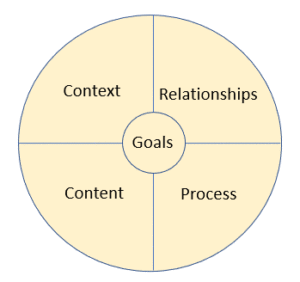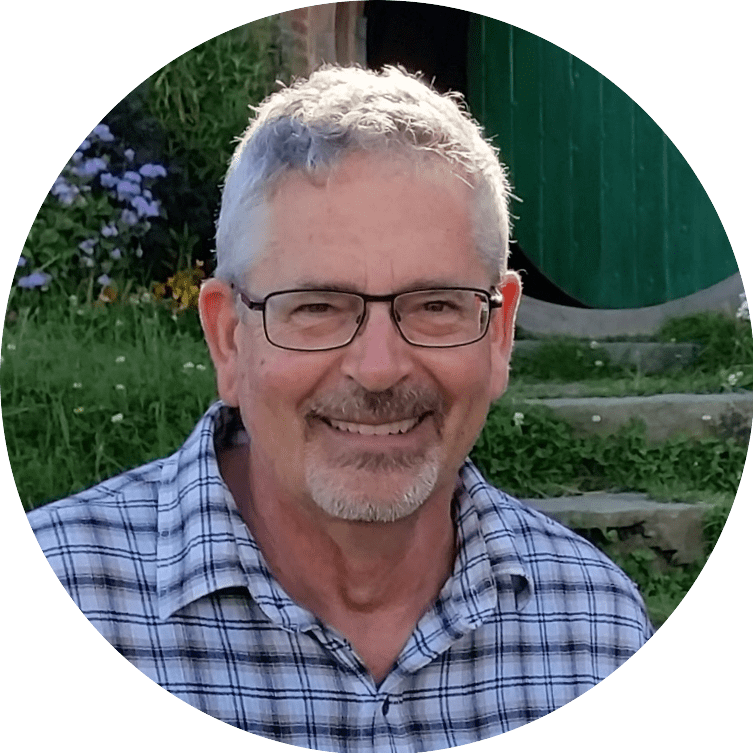The growing role of facilitation in driving sustainable transformations
As agencies, organisations, and change-makers increasingly prioritise equitable and sustainable transformations, the practice of facilitating collective change becomes crucial. This post delves into the often-underestimated role of facilitation in promoting constructive, collaborative change.
Facilitation can be described as a process of enabling groups to work cooperatively and effectively together and which emphasises the involvement of all participants in a meaningful way. It comprises a system of tools, techniques and skills to be used in working with a group or collective – enabling and supporting them to achieve their objectives in a way that involves and respects all contributions, builds ownership and and releases the creative potential of those involved.
Over time, facilitation approaches can become transformative within a group, community, or organisation. They can enrich democratic processes and promote cultures that are supportive of collaboration and partnership in the pursuit of sustainable solutions. These inclusive approaches reflect a new way of working, challenging traditional top-down approaches and developing a culture of participation. As the authors of the MSP Guide remind us, facilitation in this sense then refers to the entirety of the process, not just the individual meetings and events within the process. Facilitating inter-group communication and the emergent relationships is also important to ensure a structured, coherent and mutually beneficial process.
In this post I briefly explore five key dimensions of facilitation: goals, context, relationships, process, and content. I then acknowledge the diverse approaches facilitation employs to involve participants, support a learning culture, and marshal evidence in complex, multi-stakeholder environments. The post concludes with a few practical insights and strategies for those supporting such collaborative processes.
Five key facilitation dimensions

When a group is functioning well, the group dynamics and sense of purpose can bring out the best in people. However, groups can also be inefficient and frustrated. Effective facilitation can help groups address these difficulties by balancing the focus across five dimensions: goals, context, relationships, process, and content. These different areas overlap and impact on each other in practice. Good facilitation is about addressing all areas, and not just focusing on one or two in isolation. However, as Nick Wright points out in a useful blog post, having explored each area in whatever way or level suits your situation, you are free to focus your efforts on those that need special attention. Different questions and reflections can guide group members to assess their performance on each of these different dimensions
- Goals: In order to achieve results, its important for a group or collaborative to identify the scope and scale of their work together, and what might constitute an improvement. For a work team this might be a clear goal, while for a multi-stakeholder catchment group it may be more important to help the group recognise shared aims, aspirations and targets that they want to move towards. Useful questions may include topics such as: What will success look like?; What would make a great outcome for you?; How will you know when you have reached it?; or Who or what else is impacted by it and how?
- Context: Groups need to recognise and understand the context in which they operate. This requires helping a group understand and appreciate its members’ different cultural, social, political, and organisational backgrounds, as well as any external factors that may influence the process. Questions that may uncover key aspects of context include: What factors might affect our group dynamics and decision-making?; What external forces or trends influence our desired outcomes?; Are there any organisational assumptions that we should be aware of?
- Relationships: Relationships are key to fostering emergence, new thinking and ideas that would not come for individuals or homogeneous groups. Change begins and ends with relationships, and a big part of systems change is re-wiring and bringing greater depth (trust) to existing patterns of relationships. Good questions to encourage group members to think about relationships could include: Have we got the right people in the room – who is missing?; What is working well in the group’s relationships?; What is creating tension among group members?; How could we resolve conflicting differences?
- Process: The kinds of relationships that support safe, creative and innovative multi-stakeholder collaborations do not simply happen. This is where process comes into play, the “how” of facilitation. As we imagine the outcomes of facilitation in terms of the results and relationships we want to see in the world, it is important to design at least some of the relationship building in such a way that it aligns accordingly. Key questions include: Who do we need to bring together?; What are the key conversations we need to have?; What are the best processes to use with these groupings?; What structures, resources and roles will support this work? Are we creating a safe and caring environment for all – including people that have often been left out of these processes?
- Content: Content is what the group or collaborative is about, what outputs are required, what information is being shared and what decision needs to be made. Effective knowledge sharing improves team and individual productivity, empowers your members, and builds a strong, connected community or collaborative. Key questions include: Are we privileging some knowledges over others?; Do we have the right information and expertise to do this?; What is the issue from your perspective?; What do we need to take into account as we work on this together?
Facilitation is a system of tools, techniques, and skills to help a group of people work well in defining a common vision, making decisions, achieving their goals, and creating a relational climate where trust prevails and communication is fluid, empathic, and honest. Daniel Christian Wahl
Facilitation tasks and techniques

Facilitation has many uses, from supporting a single board or team meeting to guiding complex processes of organisational change and development. It’s also applicable in project, programme and portfolio management, and can usefully support project teams in planning, risk management, project implementation, and adaptive management. Various facilitation tools and techniques can be used in different aspects of problem-solving and decision-making. Some can bring a new approach or energy to the proceedings. Most importantly, their use ensures everyone has the opportunity to be fully involved and is able to contribute.
Of course, the scope of facilitation extends beyond individual meetings, encompassing wider programmes, organisational structures, and even community and regional collaborative initiatives. This highlights its capacity to support different levels and structures of participants. The versatility of facilitation is further demonstrated by its applicability across varying timescales, from facilitating concise meetings spanning a few hours or days, to orchestrating long-term multi-stakeholder processes that unfold over several months or even years.
It’s crucial to underscore the growing importance of skills like critical thinking, problem-solving, and collaborative learning in these contexts. These skills will be fundamental in supporting the systemic transformations being demanded in so many areas in the forthcoming years. This trend is being driven by the increasing demand for innovative thinkers who can contribute to the design of solution pathways that encourage and coordinate constructive collective action drives this trend. Facilitation plays a key role here. It not only cultivates these skills among participants but also requires the facilitators themselves to model these skills through their practice.
There are a range of facilitation guides, tools and techniques that are easily available online to engage people and mobilize evidence in complex settings involving multiple stakeholders. These tools – in combination with other techniques, like mediation or different types of forums – can also help address conflict and other barriers to fruitful engagement. Kelly Ann McKercher’s Model of care in co-design reminds us that good practice requires us to go beyond business as usual and work harder to create and maintain safety in these new collaborations – especially when we should be looking to better support traumatised and historically under-invested in groups of people.
Tips, insights and design elements
Based on experiences and insights with some of the work referred to on this website, I have listed a few design elements that may be useful in the design of collaborative transitions and other transformational initiatives involving multistakeholder settings.
- Collaborations take time and need to be developed with a clear expectation of a shared outcome in mind, even though the exact shape of that outcome cannot be specified in advance.
- Good facilitation is needed to support open conversations. These conversations will often need to include those being run by key stakeholder groups within the process (science team, modelling team, key sector groups, etc.)
- A multi-disciplinary project team comprising relevant technical, policy, facilitation and engagement skills, involved throughout will bring rigour to the process.
- Care must be taken to ensure different knowledge systems are all appreciated and used within the wider process. These will include knowledge from science, local and traditional systems.
- Stakeholder values underpin the process. However, it is important to remember that these are not separate from the process, and need to be revisited iteratively in the light of different discussions and contexts.
- Targets and indicators should cover the important values most susceptible to change.
- Diagrams and other visualisation tools are important to help present complex information in a visually simple and accessible way.
- Incorporating participatory evaluation and reflection into the process design enhances the likelihood that collaborative initiatives can meet a range of individual participant needs while also achieving collective outcomes.
Facilitating collective change requires an awareness of underlying goals, context, connections, method, and content. It calls for patience, empathy, and the ability to cultivate an environment of trust and open dialogue. In the end, it is only by by acknowledging and weaving together diverse knowledge systems, that we can collaboratively design regenerative solution pathways that are not only socially and environmentally sustainable but also equitable and inclusive.
Additional information can be found from the related LfS pages – Systemic co-design, Managing virtual teams and Facilitation tools and techniques. Other closely related site sections include: Planning, monitoring and evaluation, Team building, communities of practice (COPs) and learning groups and Cross-sector partnerships and collaborations.
[Note: This replaces earlier versions of this blog posted on 17/09/2022 and 6/4/2023]
An independent systems scientist, action research practitioner and evaluator, with 30 years of experience in sustainable development and natural resource management. He is particularly interested in the development of planning, monitoring and evaluation tools that are outcome focused, and contribute towards efforts that foster social learning, sustainable development and adaptive management.


Leave a Reply